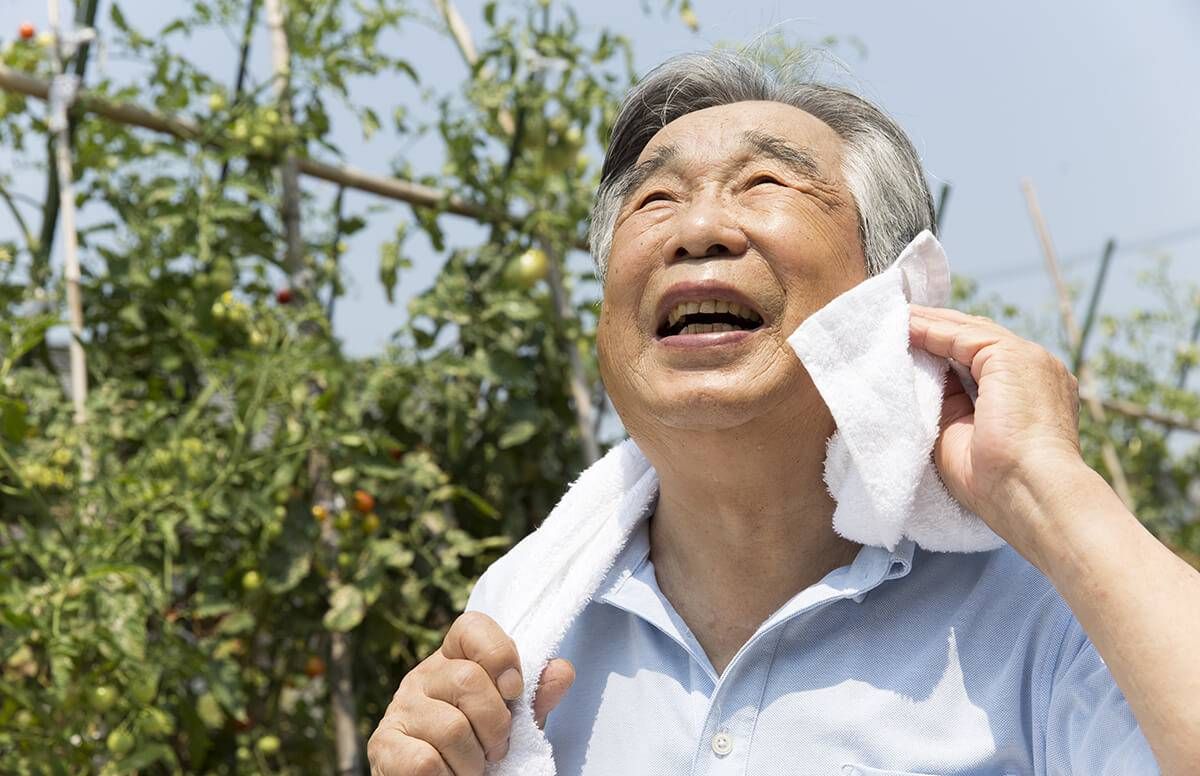Heat Stroke Is Especially Dangerous, Even Deadly, in Older Adults
Take heed of the warning signs and stay cool this summer
Editor's Note: This article was originally published on July 10, 2017.

Many people embrace the extra hours of sunshine summer months offer, but the heat that comes with them can threaten your health. People age 65 and older are especially susceptible to heat stroke. In fact, 40 percent of heat-related deaths occurred in people 65 and older between 1999 and 2003, according to the Centers for Disease Control.
Where you live makes a difference, too. As you might suspect, heat strokes are more common in warmer states. California, Arizona and Texas accounted for 40 percent of heat stroke-related deaths between 1999 to 2009.
Heat Stroke and Aging
Heat stroke is a life-threatening condition where the body fails to cool itself properly and your core temperature exceeds 104 degrees Fahrenheit.
“In our body, our pump is our heart, and our radiator is our skin,” says Dr. David Claypool, department of emergency medicine at Mayo Clinic Rochester. “As we age, the heart doesn’t pump as well, and you don’t sweat as easily.”
But there are also more factors in the equation. Over time, your muscle-to-fat ratio changes, and your body collects fat in different places than it once did. Add that to the fact that your arteries expand with age, but lose their elasticity and collect plaque inside.
“Many people have various medical issues that reduce heart function as they get older, such as heart disease, congestive heart failure, and chronic obstructive pulmonary disease (COPD),” says Dr. Farhan Siddiq, an endovascular neurosurgeon at Texas Health Fort Worth with the Texas Health Physician Group.
Influence of Medications and Gender
Certain medications — such as calcium channel blockers, beta blockers and diuretics (water pills) also make it more difficult for your body to respond to heat. In each of these situations, the heart must work harder to cool down.
All these changes cause your body to retain heat instead of releasing it.
Gender matters, too. In 2015, 71 percent of the people who died from heat stroke were men.
There is no current data that explains why men are more susceptible or whether they have genetic factors that increase their risk for heat stroke. But experts suspect that men might be more susceptible than women because they are more likely to engage in outdoor activities. Also, since men are larger than women, their bodies may have a harder time dissipating heat, Claypool says.
Heat Exhaustion vs. Heat Stroke
There are three main heat illnesses, with the least serious being heat cramps, the Mayo Clinic says.
Next is heat exhaustion, in which your body is becoming overheated. Symptoms of heat exhaustion include cool, moist skin; heavy perspiration, faintness or dizziness; fatigue; weak and fast pulse; muscle cramps, nausea and headache, Mayo says.
If not treated, heat exhaustion can lead to heat stroke, which is a medical emergency. The sooner you recognize the signals, the better.
A high temperature is the main sign of heat stroke, according to the Mayo Clinic.
“Once the [body] temperature crosses 104 or 105, it becomes much more difficult to reduce and bring back down,” Siddiq warns. “Studies show that people who have higher temperatures have worse outcomes and are less likely to survive.”
Other symptoms of heat stroke, according to the Mayo Clinic, may include:
- Altered mental state. Heat stroke may cause confusion, agitation, slurred speech, seizures and coma.
- Dry or moist skin. Heat stroke from hot weather will cause the skin to feel hot and dry. Heat stroke brought on by strenuous exercise will make skin feel moist.
- Nausea and vomiting
- Flushed skin
- Rapid, shallow breathing
- Racing heart rate
- Throbbing headache
If you suspect heat stroke, call 911.
How to Stay Safe
While a serious condition, the good news is that most cases of heat stroke can be prevented.
- If possible, stay indoors in an air-conditioned environment during the warmest parts of the day. The highest temps usually fall between 10 a.m. and 2 p.m.
- Wear light-colored clothing. Darker colors absorb more heat.
- If you live alone, have someone check on you each day, and do the same for vulnerable neighbors, the CDC recommends. Many heat stroke-related deaths occur indoors, sometimes when summer storms knock out power.
- Keep track of how much water you drink each day. The part of the brain that tells us we’re thirsty tends becomes less sensitive with age, so thirst is easily overlooked. “Hydration needs to be individualized. It’s not a one-size-fits-all,” says Neeraj Badhey, an interventional cardiologist with Texas Health HEB/Texas Health Physicians Group. For example, people taking water pills may need to alter their doses when they spend time sweating in the sun.
- Give your body time to adapt to temperature changes. “People don’t think about the heat enough, and they don’t think about heat adaptation,” Claypool says. “People run out into the garden on the first day the temperature hits 75 degrees.” But this can shock your body when you’ve bundled up all winter long.
- Ask your doctor how the medications you are taking affect the way your body responds to heat and how to adjust your medications accordingly.
“If you’re going to go out in the heat, stay hydrated,” Badhey says. “Try to avoid extreme temperatures and have a backup plan if you get overheated. Don’t underestimate the power of the high temperatures.”

